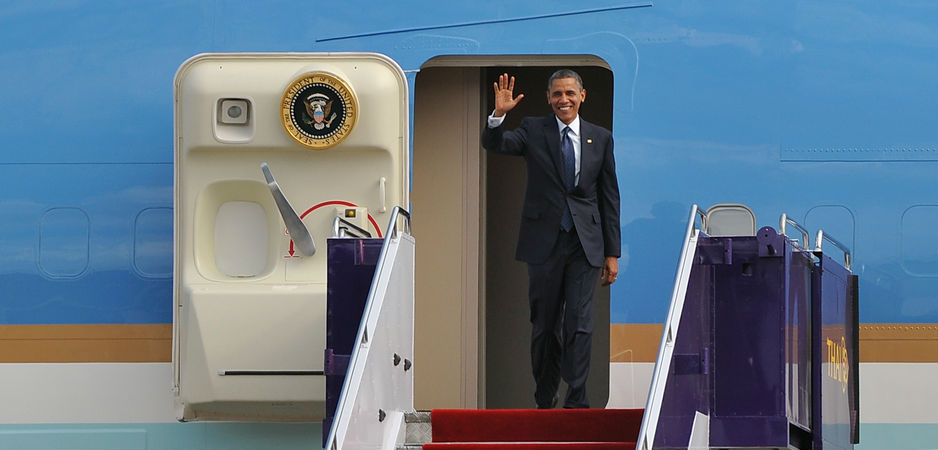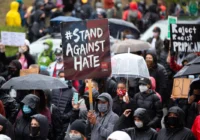Obama’s visit to India as the chief guest for the Republic Day celebrations underscores the determination of both administrations to revitalize the bilateral relationship.
US President Barack Obama’s upcoming visit to India, his second as a serving president, is historic for both its optics and the potential to fast track the slow moving train of India-US relations.
Obama as the chief guest for India’s Republic Day parade — the first US president to be invited for the occasion — has great symbolism. The White House recognized the significance of the first-ever invitation and acted despite difficulties of scheduling. The president’s State of the Union address to the US Congress, typically in the last week of January, was brought forward so Obama could be in New Delhi.
The US establishment rightly determined that accepting Indian Prime Minister Narendra Modi’s invitation and clocking this “first” was important. Also important was to reinforce Modi’s bold move — the invitation effectively jettisoned traditional Indian reluctance to go public with the Americans.
By honoring the US president, the Indian government has taken a step to shed some of the past insecurities to finally catch up with the people. That’s all for the good.
Obama’s visit is also an acknowledgment that the India story is resonating once again in the world, and the Americans ought to be in front not behind other countries. The US administration has responded well to the new energy coming out of official India, despite being pulled in different directions by multiple foreign crises.
Foreign crises will form a big part of the discussion between Obama and Modi — the turmoil in the Muslim world at large, the rise of the Islamic State, the recruitment of youth through the Internet, the Afghanistan–Pakistan situation and China. All of these point for greater cooperation between the US and India.
US Secretary of State John Kerry was recently in India — his second visit since Modi became prime minister — to attend the Vibrant Gujarat summit, where the US was a partner country for the first time. Kerry’s trip was meant to nail down concrete progress in the India file that can be showcased during Obama’s January 25-26 visit.
Trade Relations
It’s worth noting that the Obama administration has significantly toned down the harsh rhetoric on India’s trade policies. Recognizing the progress made recently, the US Trade Representative last month closed its “301 out-of-cycle” review of India’s intellectual property (IP) laws, giving this perennial sword over bilateral relations a rest, even if temporarily. Discussions on contentious issues such as IP are being held in private rather than in the public domain, which has led to an automatic improvement in the atmospherics.
The level of activity between the two governments since Modi became prime minister has gone up by leaps and bounds. Various bilateral groups, which had not met for nearly three years but were always counted as proof that we had a “strong” relationship, have actually been meeting. These include the Trade Policy Forum, the Defense Trade and Technology Initiative and the High Technology Cooperation Group.
Then there are newly established contact groups — one to sort differences on India’s nuclear liability law, an investment forum and an infrastructure platform. The US side is happily surprised at the responsiveness of the Modi government.
Potential areas of progress include a finalized text for a Bilateral Investment Treaty (BIT), an agreement on climate change and a renewal of the Defense Framework Agreement for another ten years. In addition, India and the US are likely to further enhance their intelligence cooperation but without public pronouncements.
Aligning the needs of the two systems sometimes has proved difficult, but what’s different this time is the desire to find solutions. And that is a definite change after losing nearly three years in limbo. The question is how much can India push the United States to change its systems and make exceptions.
The US has its way of negotiating — what it says is normally accepted by other countries. India, which doesn’t fall in an easy category, has its perspective. Its positions are well argued and cannot be easily dismissed. The Americans, often unwilling to change their processes, find it frustrating to have to justify themselves.
Whether it is differences on intellectual property protection or obtaining basic development needs for Indians but also curbing emissions, buying high-end US defense technology but without signing basic agreements the Pentagon requires — every tussle brings out the difference in worldview.
The Americans want India to promise not to use the tool of compulsory license (CL) to force prices of life-saving drugs down except in an emergency. India is unlikely to commit to the demand because no government would give up a policy instrument, especially when it has not abused it. India has used CL only once.
Indian IP laws are TRIPS-compliant under the World Trade Organization (WTO) rules. In essence, what the US is demanding on behalf of its pharma industry is something that can be described as “TRIPS plus,” which would go beyond WTO agreements. More discussions may yield a new fuzzy position, but the fundamental Indian stand will likely remain.
Similarly, the requirements of the American system hamper transfer of sensitive US defense technologies to India because New Delhi has refused to sign what Washington calls “foundational agreements.” There are at least five, but two are seen as key to getting over regulatory hurdles —the Communications Interoperability and Security Memorandum of Agreement (CISMOA) and the Logistics Support Agreement (LSA).
Even though US officials are “working around them” — as former Deputy Defense Secretary Ash Carter put it — they say life would be a lot simpler if India just signed the agreements that all other US partners have. The flow of defense technology would be a lot smoother.
 But New Delhi remains constant in its refusal — it feels it doesn’t need to tie itself down with these agreements, which may allow the US an entry it is unwilling to grant as yet.
But New Delhi remains constant in its refusal — it feels it doesn’t need to tie itself down with these agreements, which may allow the US an entry it is unwilling to grant as yet.
Another suggestion from Washington is for India to buy more off-the-shelf technology instead of trying to reinvent every wheel and make a quick “qualitative” jump in defense capability. Border security can be improved in new ways with what’s already available on the market.
Whether there are many breakthroughs or none, the fact that Obama and Modi are meeting again within a short span will keep the two systems focused and geared for progress.
*[Seema Sirohi is a Washington DC-based analyst and a frequent contributor to Gateway House: Indian Council on Global Relations. Her Twitter handle is: @seemasirohi. This article was originally published by Fair Observer’s content partner, Gateway House.]
Fair Observer is a nonprofit organization dedicated to informing and educating global citizens about the critical issues of our time. Please donate to keep us going.
The views expressed in this article are the author’s own and do not necessarily reflect Fair Observer’s editorial policy.
Photo Credit: 1000 Words / Rena Schild / Arindambanerjee / Shutterstock.com
Support Fair Observer
We rely on your support for our independence, diversity and quality.
For more than 10 years, Fair Observer has been free, fair and independent. No billionaire owns us, no advertisers control us. We are a reader-supported nonprofit. Unlike many other publications, we keep our content free for readers regardless of where they live or whether they can afford to pay. We have no paywalls and no ads.
In the post-truth era of fake news, echo chambers and filter bubbles, we publish a plurality of perspectives from around the world. Anyone can publish with us, but everyone goes through a rigorous editorial process. So, you get fact-checked, well-reasoned content instead of noise.
We publish 2,500+ voices from 90+ countries. We also conduct education and training programs
on subjects ranging from digital media and journalism to writing and critical thinking. This
doesn’t come cheap. Servers, editors, trainers and web developers cost
money.
Please consider supporting us on a regular basis as a recurring donor or a
sustaining member.
Will you support FO’s journalism?
We rely on your support for our independence, diversity and quality.









Comment